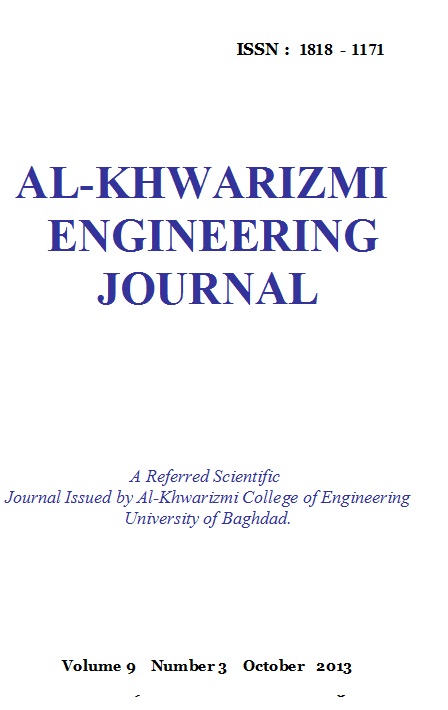Pressure Control of Electro-Hydraulic Servovalve and Transmission Line Effect
Keywords:
Electro-hydraulic servovalve, Twin flapper nozzle, Transmission Line effect, Open loop Pressure control, Voltage linearization Equation, DAP-view Data AcquisitionAbstract
The effected of the long transmission line (TL) between the actuator and the hydraulic control valve sometimes essentials. The study is concerned with modeling the TL which carries the oil from the electro-hydraulic servovalve to the actuator. The pressure value inside the TL has been controlled by the electro-hydraulic servovalve as a voltage supplied to the servovalve amplifier. The flow rate through the TL has been simulated by using the lumped π element electrical analogy method for laminar flow. The control voltage supplied to servovalve can be achieved by the direct using of the voltage function generator or indirect C++ program connected to the DAP-view program built in the DAP-card data acquisition connected to PC, to control the value of pressure in a selected point in the TL. It has been found that the relation between the voltage value and the output flow rate from the servovalve in most of the path is a linear relation. The MATLAB m-File program is used to create a representation state of the mathematical model to find a good simulation for the experimental open loop control test.
Downloads
Downloads
Published
Issue
Section
License
Copyright: Open Access authors retain the copyrights of their papers, and all open access articles are distributed under the terms of the Creative Commons Attribution License, which permits unrestricted use, distribution, and reproduction in any medium, provided that the original work is properly cited. The use of general descriptive names, trade names, trademarks, and so forth in this publication, even if not specifically identified, does not imply that these names are not protected by the relevant laws and regulations. While the advice and information in this journal are believed to be true and accurate on the date of its going to press, neither the authors, the editors, nor the publisher can accept any legal responsibility for any errors or omissions that may be made. The publisher makes no warranty, express or implied, with respect to the material contained herein.












